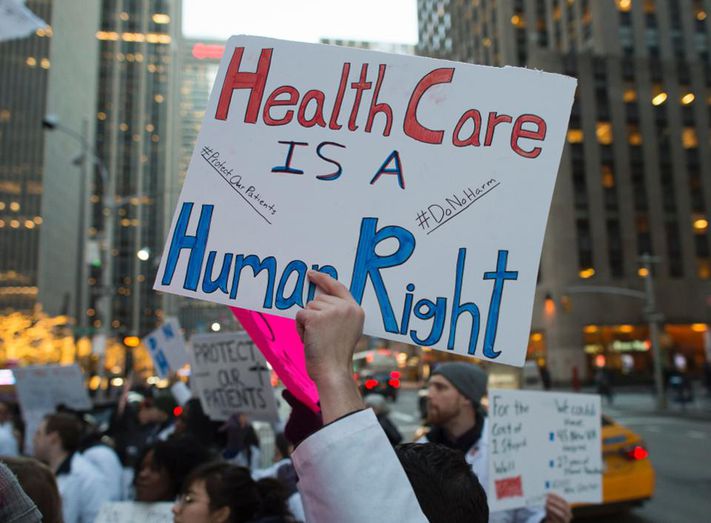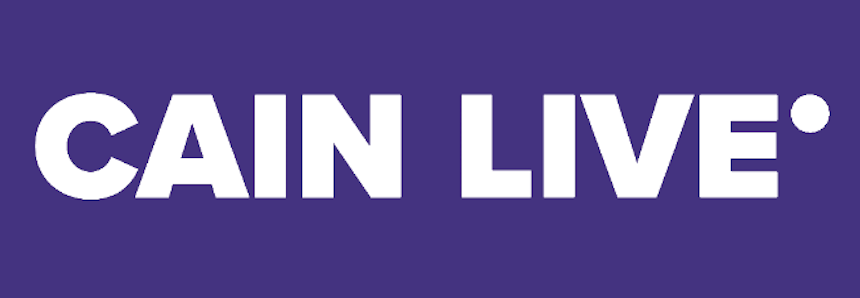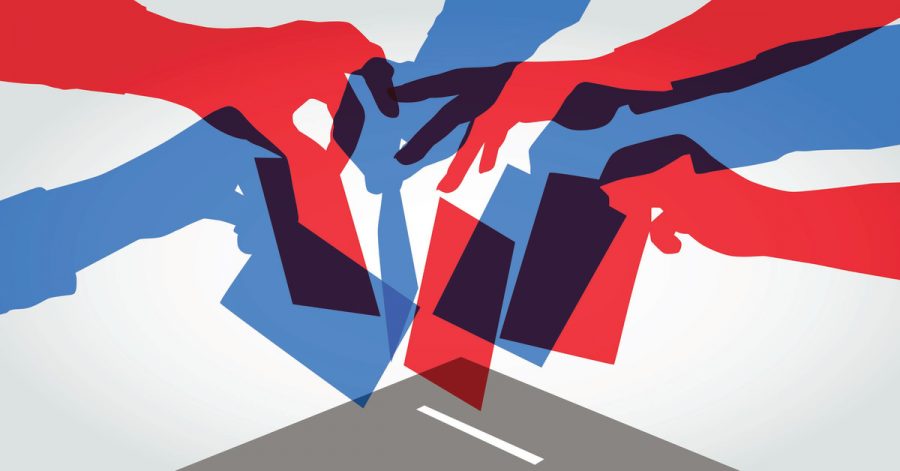In the 2020 presidential election, a major topic of discussion is the American healthcare system. While both parties agree that reforms are necessary, a debate has arisen regarding how these changes should be implemented. Currently, many Americans are unsettled by a lack of regulation in healthcare.

What is American healthcare?
The American healthcare system is made up of private and public insurance organizations.
“There are both private and public insurers in the U.S. healthcare system,” a document published by The Arizona Department of Public Health stated. “What is unique about the U.S. system in the world is the dominance of the private element over the public element.”
In the United States, the most popular form of private insurance is employer-sponsored.
“Employer-sponsored insurance represents the main way in which Americans receive health insurance,” The document continued, “Employers provide health insurance as part of the benefits package for employees. Insurance plans are administered by private companies, both for-profit (e.g. Aetna, Cigna) and non-for-profit (e.g. Blue Cross/Blue Shield). Private insurers accept premiums from individuals, businesses, and the government. In turn, they reimburse providers for taking care of patients with private insurance.”
Public insurance (Also known as medicare) is a form of healthcare provided by the Government. To qualify for this form of health care, a beneficiary must be 65 years or older or suffer from a medical condition that is covered by the program.
“Medicare is a single-payer program administered by the government; single-payer refers to the idea that there is only one entity (the government) performing the insurance function of reimbursement.”
For those who use private insurance, a beneficiary must pay a premium. This is an amount of money regularly paid to an insurance company to continue receiving benefits.
“Businesses pay all or most of the premium for employer-based insurance for employees, and employees pay the remainder. On the individual market, individuals pay for all premiums out of pocket. Employer-based insurance premiums and individual insurance premiums are collected by private insurers.”
Patents on Insulin
Insulin manufacturers are inserting insignificant changes to the drug to renew their patent. This is dangerous as while brand-name insulin prices rise, a generic and more affordable version cannot be created.
“Insulin manufacturers have protected their brand name formulations by garnering repetitive patents on the same drugs,” the Congressional Diabetes Caucus said in a statement. “A practice known as evergreening. Some of these patents were extended to pharmaceutical companies for incremental innovations in insulin formulas. Recent insulin innovations appear to be more incremental than past breakthroughs. This trend has raised disagreements among stakeholders about whether recent patents justify increases in list prices.”
“The price of insulin has doubled since 2012, which follows a nearly 300 percent increase between 2002 and 2013.” -Congressional Diabetes Caucus
As a result of rising prices on patented brand-name insulin, many patients cannot afford their medication.
“Many patients struggle to afford this life-saving drug,” the Congressional Diabetes Caucus continued. “The price of insulin has doubled since 2012, which follows a nearly 300 percent increase between 2002 and 2013. Some patients have resorted to rationing and skipping doses, sometimes with tragic consequences. In 2017, for example, Alec Raeshawn Smith, a 26-year-old Minnesotan with diabetes who faced unaffordable insurance co-pays, tragically passed away after attempting to ration his insulin.“
Mental health and addiction
Mental illness and addiction are frequently left untreated. According to The National Institute of Mental Health, 46.6 million Americans over the age of 18 suffer from any mental illness ( AMI), or any mental, emotional, or behavioral disorder that varies in intensity. For example, this could include substance-use disorder, depressive disorders, anxiety disorders, etc. Only 42% of these sufferers receive treatment. Additionally, Americans who suffer from Serious Mental Illness (SMI), which is categorized as “mental, behavioral, or emotional disorder resulting in serious functional impairment, which substantially interferes with or limits one or more major life activities,” makes up 11.2 million Americans over the age of 18. These disorders typically include Post-traumatic Stress Disorder ( PTSD), Bipolar disorder, Schizophrenia, etc. It is estimated that 66% of SMI sufferers receive mental health treatment. As a result of the deficit in mental illness and substance-use patients receiving treatment, politicians are calling for more inclusivity in health-care.
“Our healthcare system is so broken,” the 2020 presidential candidate, Pete Buttigieg said in a statement. “Our approach to mental health and addiction so fragmented and frequently punitive… To meet this urgent national challenge, we need a new approach to providing mental health care. One truly prepared to tackle this as the crisis it is, and one that understands the key driver of change will be based in strengthening our communities.”
Presently, all health insurance plans are required to provide equal coverage on mental health and substance use disorders under the Mental Health Parity and Addiction Act.
“Mental health parity,” Buttigieg’s statement continued, “means that coverage and treatment for mental health and addiction are provided on equal terms as treatment for other physical conditions. If a health plan offers unlimited doctor visits for medical or surgical services, it must do the same for mental health and addiction services. Parity ensures that insurance plans cannot discriminate against people with mental health conditions or a substance use disorder by charging high co-pays or imposing annual upper limits.”
Proposed health care reforms
In the 2020 election, health care reforms are a major talking point. Among Democrats, the most popular reform involves extensions to Medicare, a federal health care coverage program.
”In the Medicare For All system,” Presidential candidate, Bernie Sanders, said in a health care proposal, “every American would be automatically enrolled into the healthcare plan — Medicare For All. Healthcare providers and facilities would continue to be independent private practitioners.”
Currently, Medicare provides benefits to those who are elderly and/or suffer from certain disabilities.
“This is how Medicare is delivered today for all Americans over age 65,” Sanders continued, “which covers 15% of the U.S. population, around 44 million people. And, this is how Medicaid and SCHIP works for low-income people, which covers over 25% of the U.S. population, over 72 million people. This is how all insurance works, it pools resources of a local community, so the power of everyone’s premiums together can afford to pay for the individual members’ care when needed. It’s a simple concept with enormous benefits. Additionally, insurance would no longer be tied to employment, so if you lose your job, you don’t have to worry about losing your healthcare.”
Some candidates have advocated for Health Savings Accounts or HSAs. This form of health care coverage is dependent on the consumer setting aside pre-taxed dollars into a savings account. The set-aside funds can be used to pay co-payments, deductibles, medications, and other health care needs. Additionally, The American Enterprise Institute published a health-care reform plan that would combine Medicare, HSAs, and private insurance.
“Under the combined program,’ The American Enterprise Institute stated, “beneficiaries would be liable for a single deduction (rather than multiple deductibles that depend on services used) and a uniform 20 percent coinsurance on all services, similar to mainstream insurance. Medicare would also add catastrophic protection, which limits the total cost-sharing that a beneficiary must pay in a year.”













